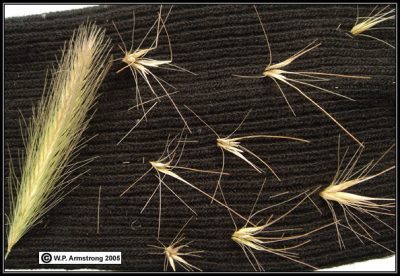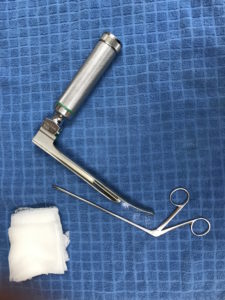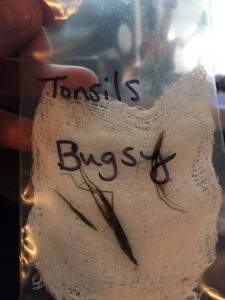
Does your dog hike or run with you in grassy open areas? Or do they love to go sniffing in overgrown areas in your yard or neighborhood? Uh oh, foxtail season is HERE. Here’s how to recognize, and more importantly, prevent these nasty weeds from hurting your dog.
What is a foxtail?
A foxtail is a grass-like weed that blooms every spring and releases barbed seed heads. These barbs can work their way into any part of your dog’s body- including eyes, ears, nose, mouth, and even directly into the skin. Because of their barbed nature, they tend to be very difficult to remove, and even worse, they can travel beyond sight very quickly.
Where does foxtail grass grow?
If you’re out and about with your dog you’ve probably seen this weed growing everywhere. It can be found in grassy areas, in yards, and even in the sidewalk cracks! Because of heavy rains this winter, foxtails are on the rise this season due to the heavy rains this past winter.
Why are they dangerous?
The danger of foxtails goes beyond simple irritation. The seed heads don’t break down in the body, so an embedded foxtail can lead to a serious infection for your dog. Like an arrow, they only travel one way – deeper into your pet’s body – and don’t come out on their own. If caught early they are relatively easy for your vet to remove. But if left untreated they can cause infection, and in serious cases, can travel through the body to your pet’s internal organs and even cause death.
How do I tell if my pet has a foxtail?
Foxtails are most commonly found in the nose, ears, eye, or between the toes, but can enter the body anywhere. Here are the most common symptoms to look for.
Nose: Nasal discharge and/or sudden onset of violent sneezing can indicate a foxtail in the nose.
Ear: If your pet is shaking his head, tilting it to the side, or scratching at the ear incessantly this could be an indication of a foxtail in the ear canal. They are usually so deep that you can’t see them and your veterinarian needs to take a look with a special scope.
Eyes: Discharge, redness, squinting, and swelling all could indicate a foxtail in the eye.
Feet: Foxtails love your pet’s feet and can get lodged in between toes in particular. If you notice limping, swelling, discharge, or tenderness of the feet, a foxtail could be the problem.
Outfox the foxtails- tips for prevention
What can you do during foxtail season to make sure these nasty weeds don’t prevent your outdoor fun? Examine your pet’s coat after outdoor time, especially if you have gone walking in open fields. Check your pet’s face and ears carefully, as well as their mouth, paws, and in between toes. Brush your pet as necessary, paying special attention to feathery, thick, or curly fur. Use tweezers to remove any foxtails you can easily get to, but remember that foxtails won’t come out on their own, so if you see any deeply embedded or if the area is red or swollen, call your veterinarian right away.
If you have what we lovingly refer to as a “foxtail magnet,” consider trimming your pet’s fur during foxtail season and keep your dog out of overgrown, grassy areas.
Our own adorable foxtail magnet is Bugsy!
Bugsy is a lovable 2 yr old Staffordshire Terrier mix who came in to see us not once, but TWICE within 2 weeks for the removal of foxtails from his tonsils. Ouch! His owners Chelsea and David brought him in the first time after a night of intermittent gagging.
In order to see what was going on and provide Bugsy with a calm, non-threatening experience, Dr. Keil sedated him with a safe anesthetic. She then used a special scope to get a good look at what was going on. She found green foxtails embedded in his tonsils, along with tons of redness, swelling, and bleeding. Poor guy! Dr. Keil removed the foxtails, Bugsy recovered well from the sedative, and he was then sent home feeling much better. Needless to say, after this event, Chelsea & David removed all foxtails from their yard!
But our little Bugsy was not to be deterred! Two weeks later, he escaped from his yard. He was found in a neighbor’s yard eating foxtails! This time Chelsea and David did not wait for symptoms and brought him right in for sedation and scoping. Once again, fearless Dr. Keil sedated and scoped to get a look. Again we found foxtails in addition to spiny oak leaves. Double ouch! Once again the plants were removed and Bugsy recovered well.
No more escaping for Bugsy, and hopefully, no more foxtails in the throat.


 Schedule an Appointment
Schedule an Appointment



